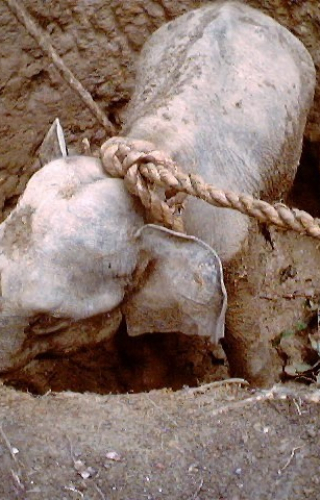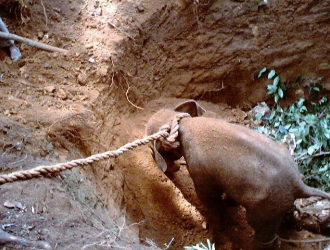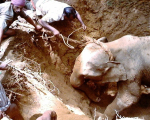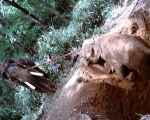The pit method is the most primitive method of capturing wild elephants and was once prevalent in South India. It was a low-cost method of capture. Pits would be dug out along elephant paths, which were four to five metres deep, four metres square at the top, and three metres square at the bottom, so that the walls had a slight incline. The pit was filled up to two metres deep with brushwood, twigs and bundles of grass to cushion the elephant’s fall. The pit opening was made to look as natural as possible by camouflaging it with a lattice of split bamboo sticks which were covered with grass and leaves. The excavated earth would be removed to some distance away. The pit would be inspected daily, but even if it was not, the trumpeting of the elephant when it fell in would be loud enough to be heard as far as a kilometre away. Once the animal was trapped, the necessary people would be notified and expert mahouts with kumkis (trained elephants) would arrive to bring the trapped elephant out of the pit as quickly as possible—within a maximum of 24 hours.
Here, the photographer captures the moments an elephant calf is retrieved out of an abandoned pit. The photos were taken in 2002, when the elephant Meenu fell into the abandoned pit near Perumthode forest, Malayattoor Forest Reserve, Kodanad Range, Kerala. The photographer Nagaraj B.N., currently the Assistant Conservator of Forests, Kerala Forest Department, was the Range Forest Officer at Kodanad. He and a group of foresters (Sundaran and Varghese) rushed to the site with trained elephants (kumkis) named Soman, Sunitha and Neelakandan. They followed the procedures involved in the pit method to successfully take the elephant out.
















